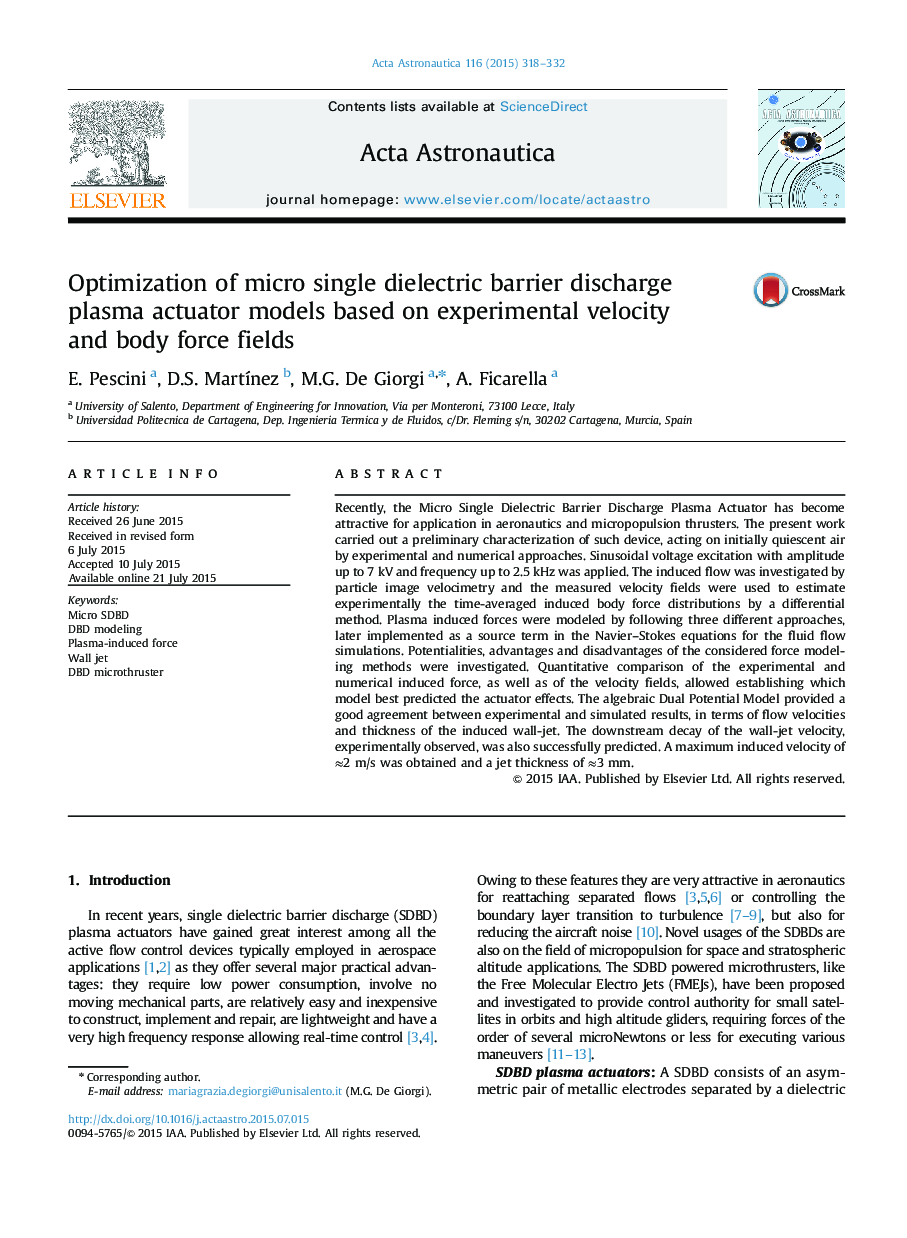| Article ID | Journal | Published Year | Pages | File Type |
|---|---|---|---|---|
| 1714305 | Acta Astronautica | 2015 | 15 Pages |
Abstract
Recently, the Micro Single Dielectric Barrier Discharge Plasma Actuator has become attractive for application in aeronautics and micropopulsion thrusters. The present work carried out a preliminary characterization of such device, acting on initially quiescent air by experimental and numerical approaches. Sinusoidal voltage excitation with amplitude up to 7Â kV and frequency up to 2.5Â kHz was applied. The induced flow was investigated by particle image velocimetry and the measured velocity fields were used to estimate experimentally the time-averaged induced body force distributions by a differential method. Plasma induced forces were modeled by following three different approaches, later implemented as a source term in the Navier-Stokes equations for the fluid flow simulations. Potentialities, advantages and disadvantages of the considered force modeling methods were investigated. Quantitative comparison of the experimental and numerical induced force, as well as of the velocity fields, allowed establishing which model best predicted the actuator effects. The algebraic Dual Potential Model provided a good agreement between experimental and simulated results, in terms of flow velocities and thickness of the induced wall-jet. The downstream decay of the wall-jet velocity, experimentally observed, was also successfully predicted. A maximum induced velocity of â2 m/s was obtained and a jet thickness of â3 mm.
Keywords
Related Topics
Physical Sciences and Engineering
Engineering
Aerospace Engineering
Authors
E. Pescini, D.S. MartÃnez, M.G. De Giorgi, A. Ficarella,
